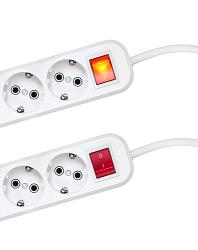 Protect Large Appliances From Damaging Electrical Surges
Protect Large Appliances From Damaging Electrical Surges
A surge suppressor (often called a surge protector) is a device that regulates the flow of electricity to and from electrical appliances. When the voltage spikes, due to a lightning strike or other reason, the suppressor redirects the extra voltage to a ground wire to prevent the appliance from suffering a damaging overload. And it’s an effective measure of protection against damage to your home equipment.
On Long Island, we have a long history of brownouts. When the electricity is restored it often surges at higher-than-normal levels because individual power stations must coordinate the distribution of power, and older systems will adjust more slowly than new ones. Thus, after a brownout, there are usually multiple small surges that could cause potential damage to a heating and cooling system.
Another major concern during brownout conditions is the restarting of machines. Whenever the air-conditioning unit starts, it draws a large amount of energy, causing a change in voltage over the entire home.
Surge suppressors also prevent surges from more common causes, including turning on and off of other major appliances (refrigerators, freezers, washers, dryers, etc.). While a single small surge from an appliance won’t necessarily damage another appliance, continual small surges can wear down circuitry and lead to a shortened life.
That may be of little concern in the case of small appliances such as toasters, alarm clocks and desk fans, but in larger appliances, surge suppressors could be the difference between your unit surviving a storm or having to be replaced.
For more expert advice about surge suppressors and other issues related to home comfort, please contact us at T.F. O’Brien Cooling & Heating. We have proudly served homeowners in the Long Island area for over 75 years.
Our goal is to help educate our customers about energy and home comfort issues (specific to HVAC systems). For more information about other HVAC topics, download our free Home Comfort Resource guide.
Surge protector image via Shutterstock
